As planned, we left the RV at Marion Campground in Coldfoot at 7:30AM and drove North towards Deadhorse. The Brooks Range rises up between us and the Arctic Ocean:
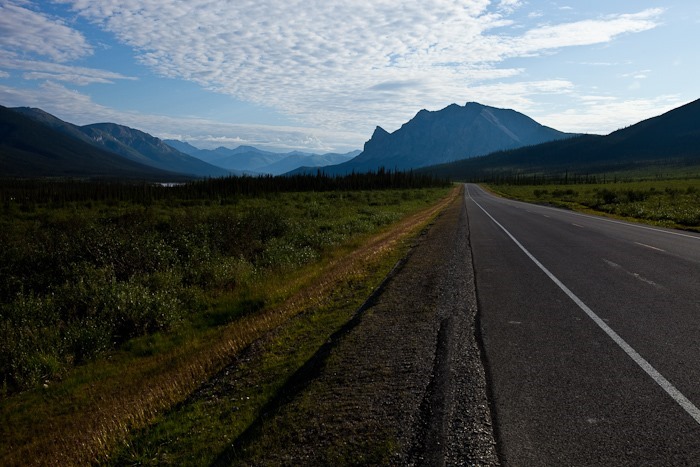
The road quickly turned to gravel, as it would be for nearly the entire drive. It’s a lonely road:
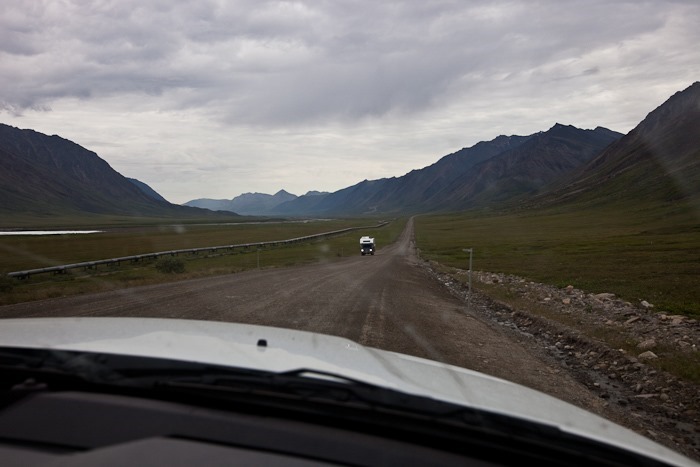
We had to wait for road construction at the turnoff for Galbraith Lake. Notice the mosquito netting on the flagger’s head. Like in Coldfoot, the mosquitos here in the boggy tundra are insanely plentiful. The flagger easily had 100 mosquitos crawling all over his head net.
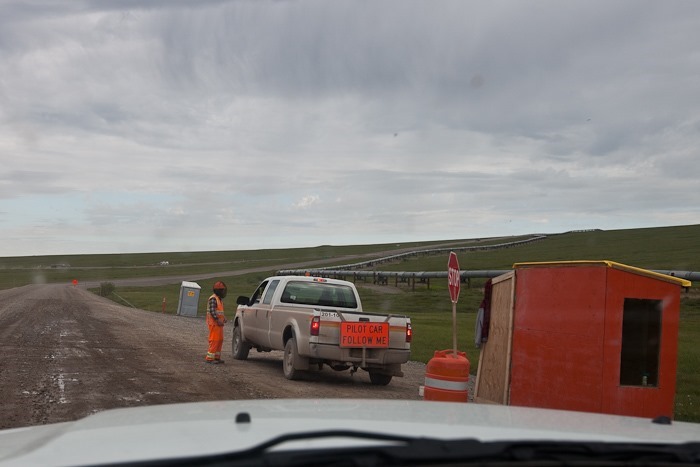
Looking back after crossing the Brooks Range:
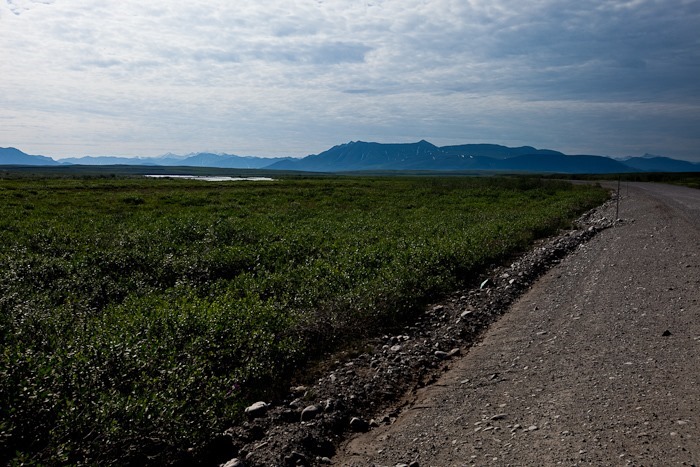
The last 100 miles to the Arctic Ocean are soggy tundra with no plants taller than a foot or so:
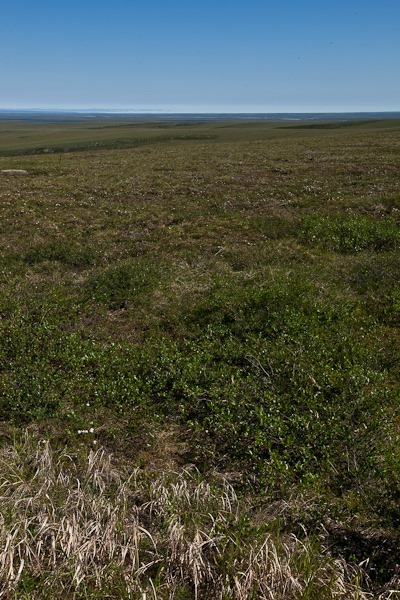
At last we reached Deadhorse after six hours of driving. It’s a town like no other, with a handful of permanent residents and thousands of oil workers working a two weeks on, two weeks off schedule:
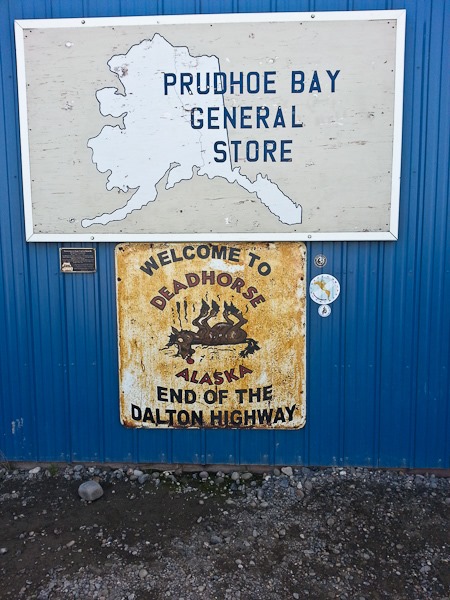
There are no parks and no schools. The “roads” are all gravel, and buildings, cobbled together from shipping container-sized sections brought in on trucks, are built on stilts to avoid melting the permafrost which would cause the buildings to collapse:
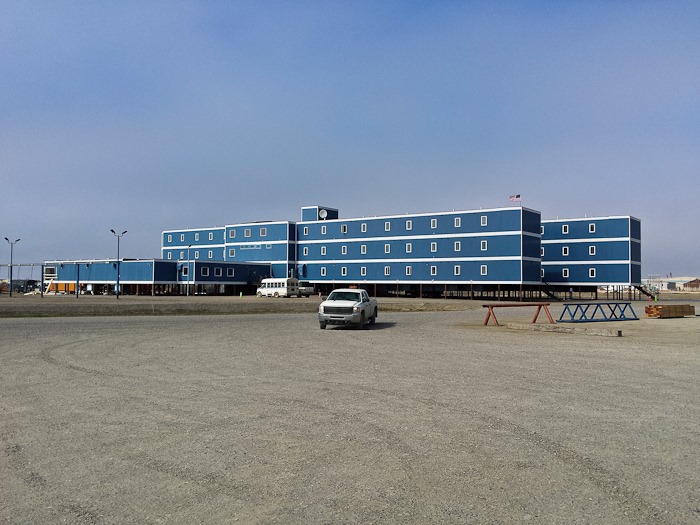
There’s no refining at Deadhorse. The oil flows 800 miles to Valdez, where it’s refined and brought back using tanker trucks. That explains the price; diesel was $4.15 in Fairbanks, $5.10 in Coldfoot, and $5.65 in Deadhorse:
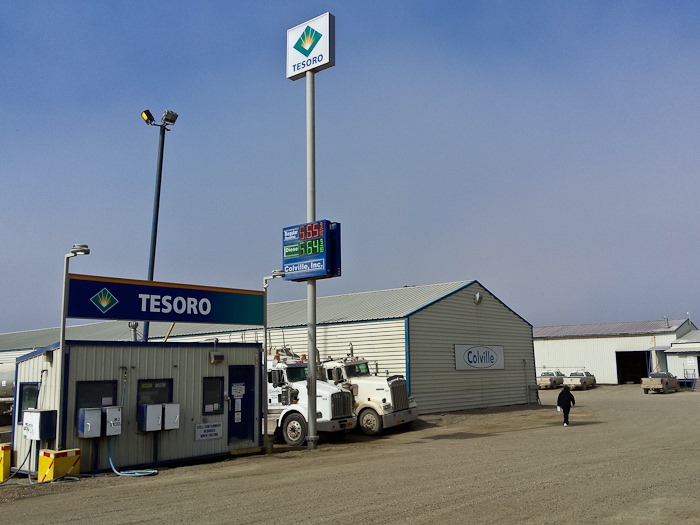
Perhaps because of the cold, the payment half of the pump is inside a building, and each pump is behind a roll-up steel door:
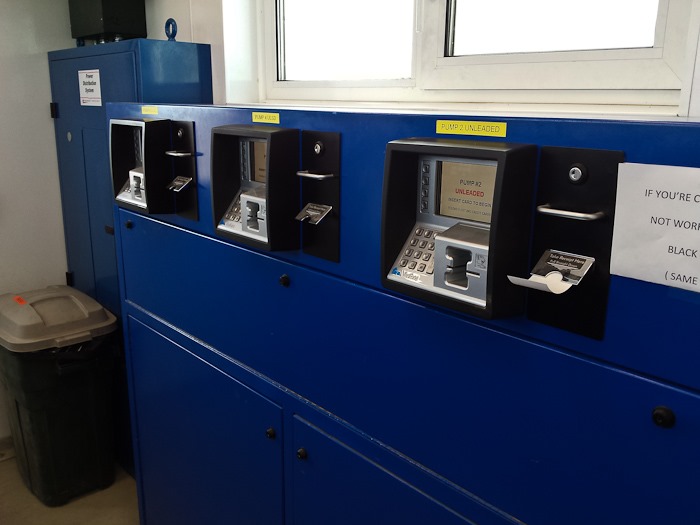
We boarded the tour shuttle bus that would take us North from Deadhorse into the restricted security zone on Prudhoe Bay and on to the shores of the Arctic Ocean. We had to sign up 24 hours in advance to allow time for background checks, and had to present ID to board the bus:

Schlumberger, manufacturer of fine oil well head pressure valves:
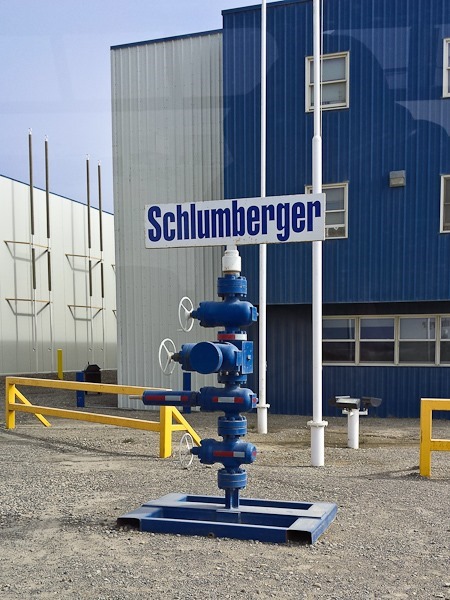
Like the Alyeska Pipeline, this building has foundation cooling towers to keep the permafrost from melting:
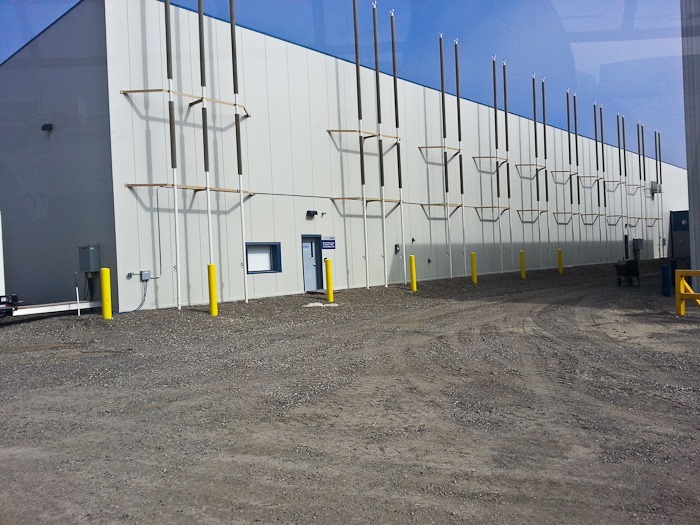
Out on the tundra, we spotted a lone caribou:
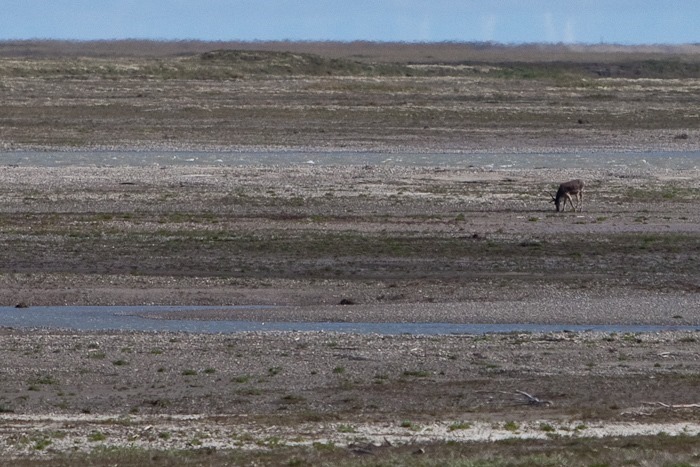
Still in town, we passed stockpiles of vehicles and machinery to support the oil fields. 4% of US oil is produced here at the largest oil field in North America:
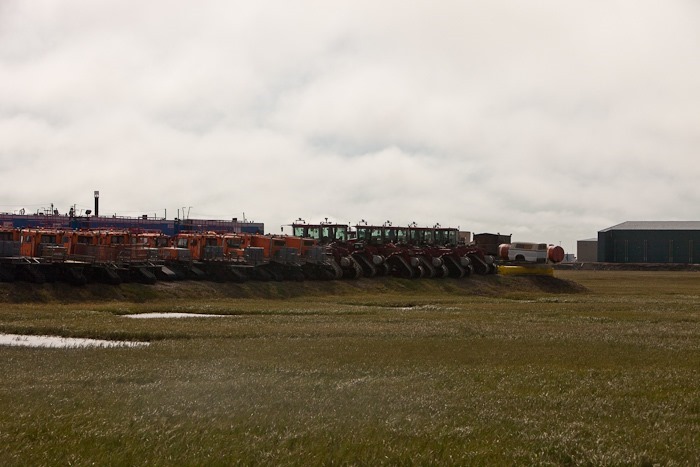
The yellow “rail” supports extension cords that hang down. Drivers plug in their cars to keep the oil pan and battery warm so that the vehicles can be started during the winter when temperatures can plunge below –60 degrees. The coldest wind chill recorded in Deadhorse was –102 degrees:
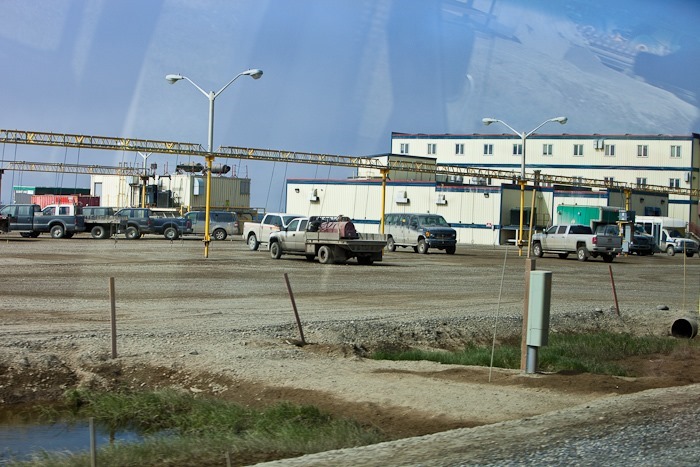
Oil drilling pipe sections:
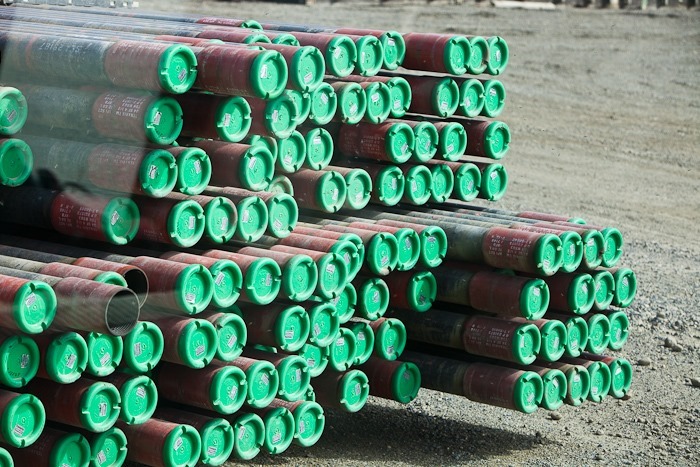
A movable oil derrick:
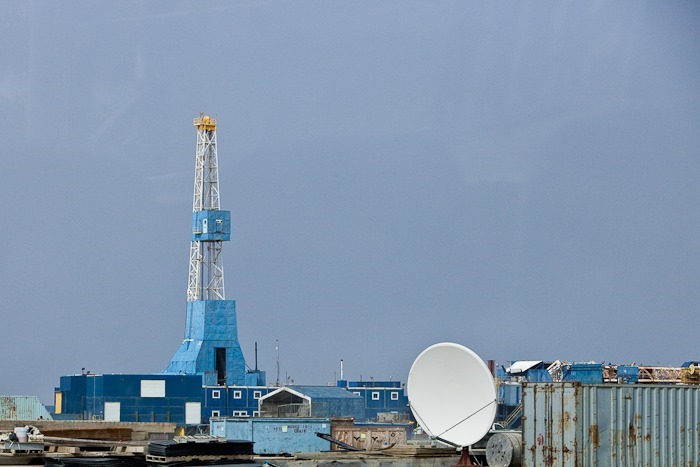
In the distance, well heads live in the square boxes. The water, oil and natural gas slurry drawn from 9,000 feet below the surface is routed to the large building:
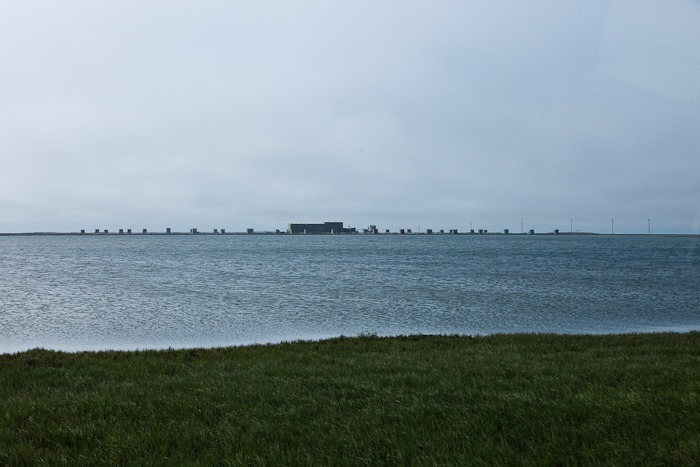
The oil derrick is a giant vehicle with 12 foot-high wheels, covered by the tarps at the lower corners of the derrick. The pilothouse and front swivel wheels can be seen on the right:
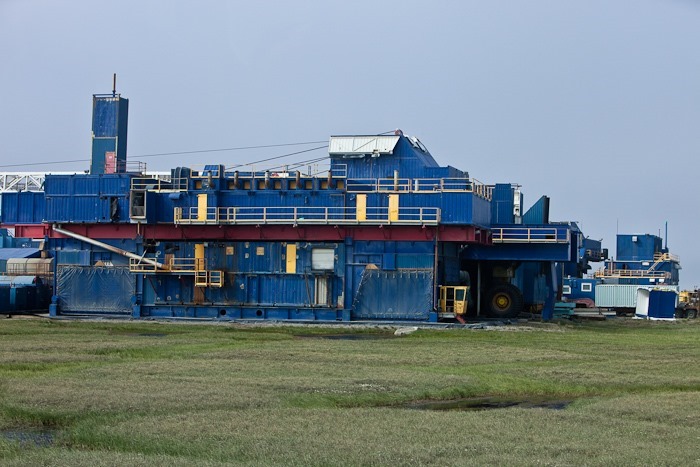
There are dozens of plants scattered over the tundra:

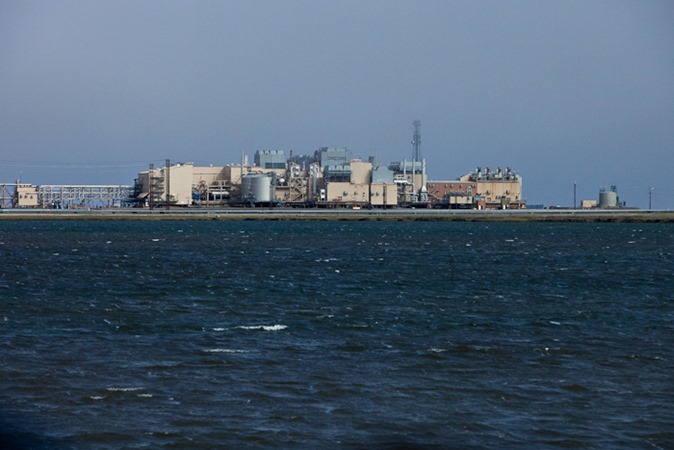
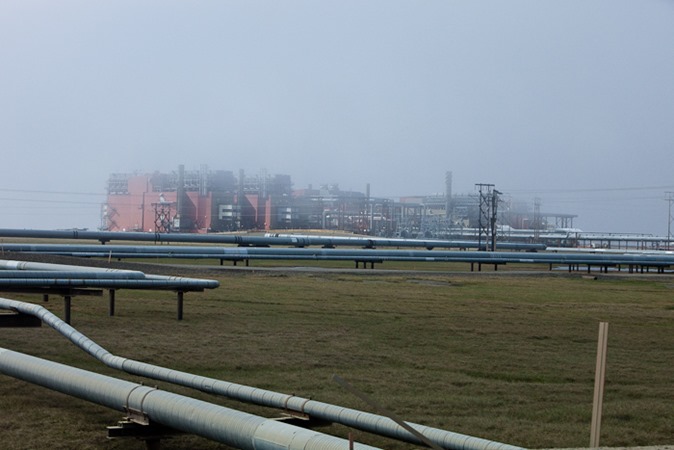
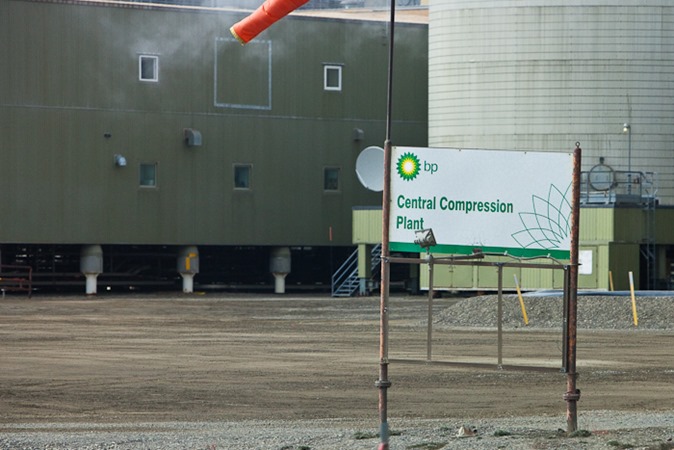
Here a well head is being serviced:
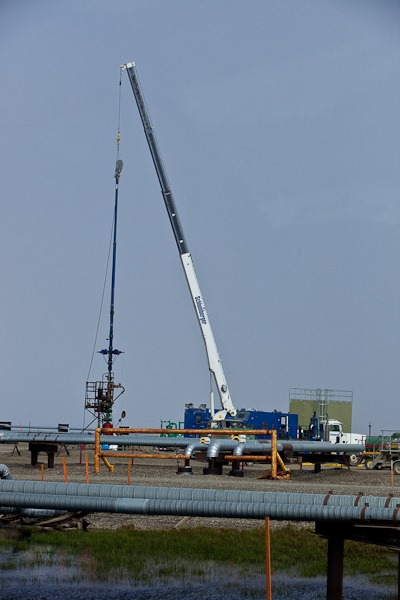
The whole area is bleak and the air is filled with dust from the roads:
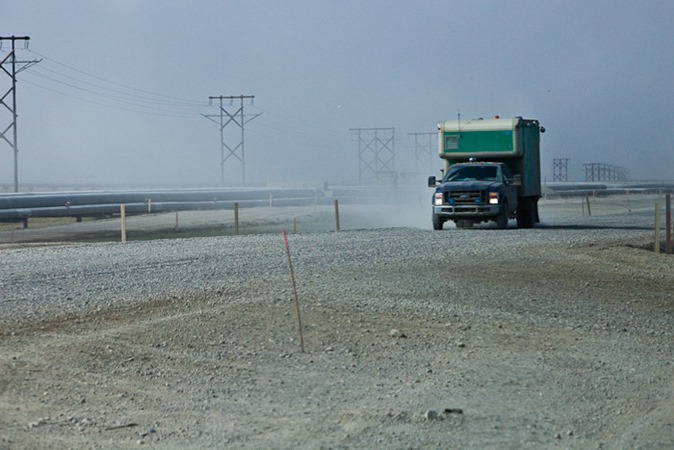
We saw quite a bit of wildlife:
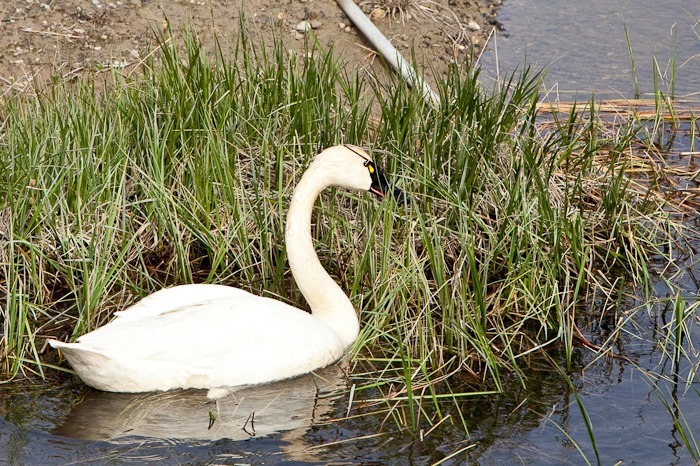
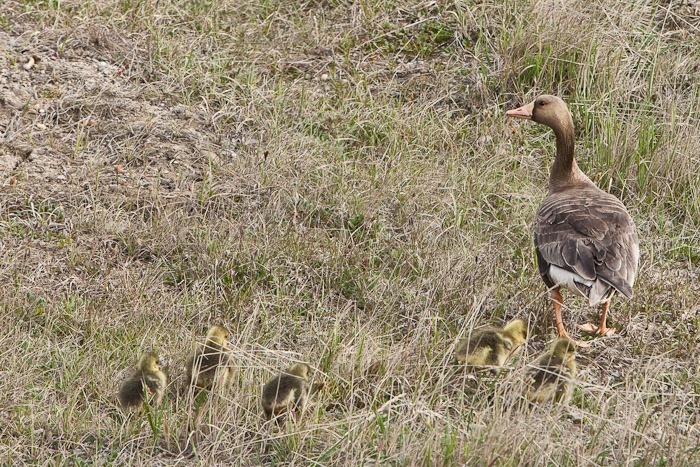
The loons were out swimming:


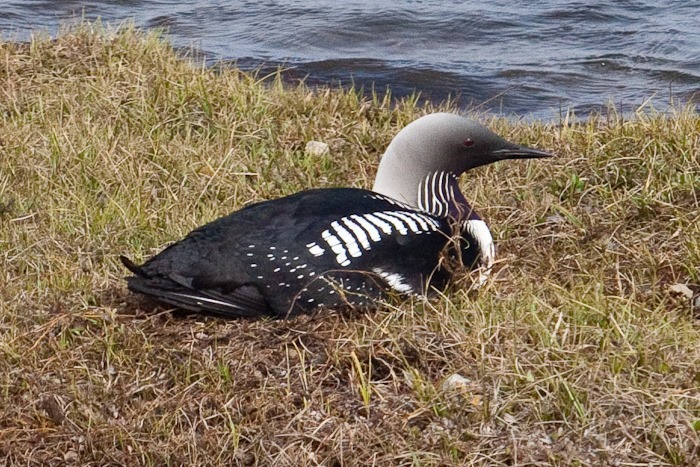
At last we reached the coast of the Artic Ocean. The ice had only broken up a few weeks ago, so the water was still 32 degrees, and the wind blowing in off the ocean was about that cold too. As a result it was pretty foggy:
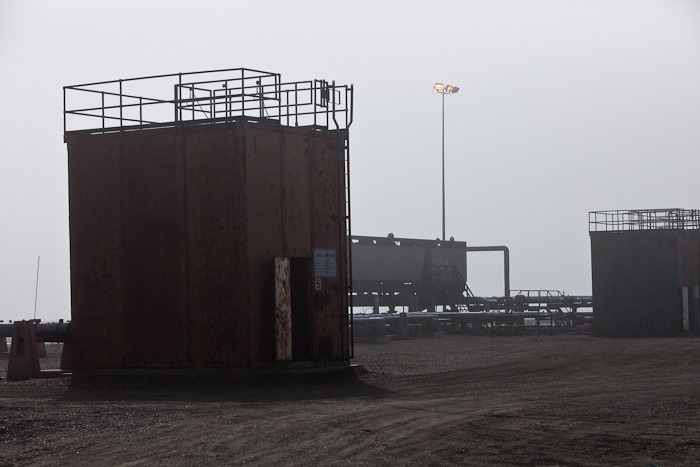
I can’t count how many times I’ve looked at the map and wondered what it would be like standing at 70 degrees latitude, looking North where only 1,200 miles distant lays the North Pole. I’m very excited to be here!
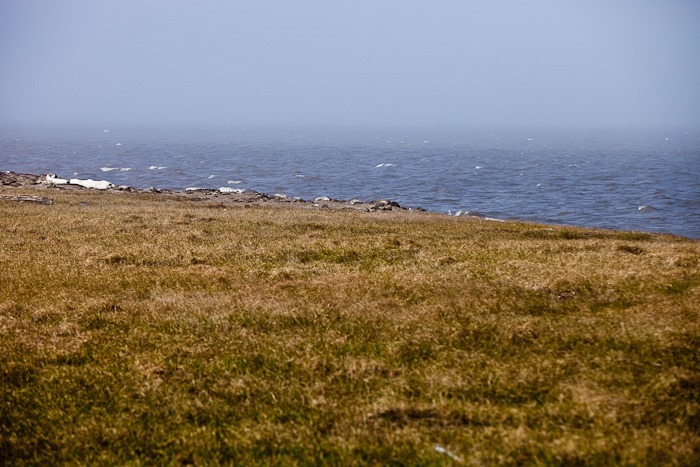
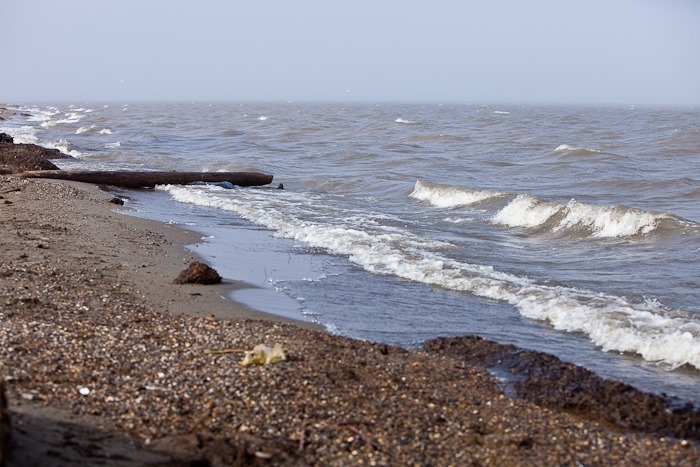

Yes, it’s really cold:

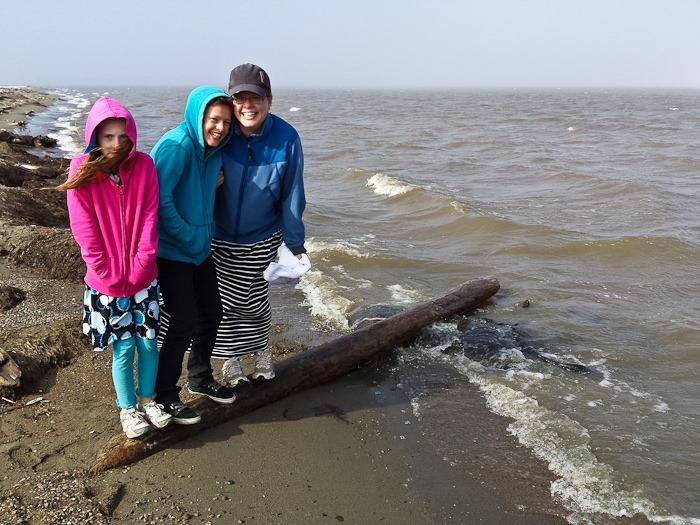
The freeze thaw cycle of the surface soil causes polygonal mounts to form in a pattern similar to the shell of a turtle:

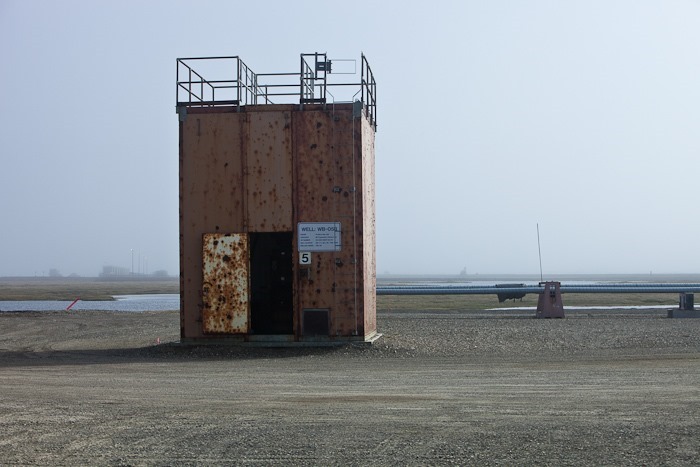
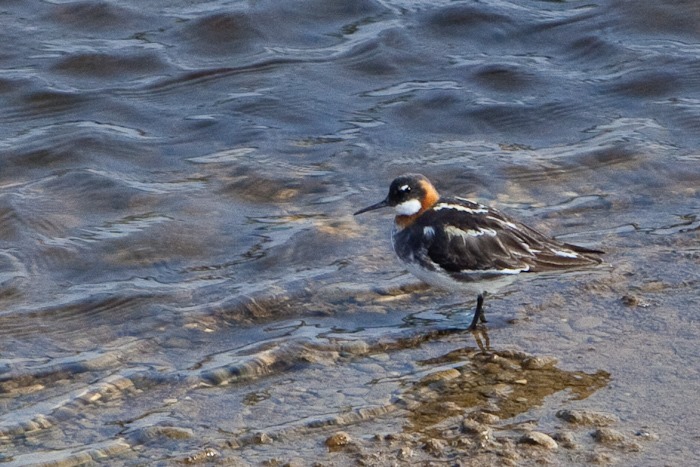

Office space on tank tracks:
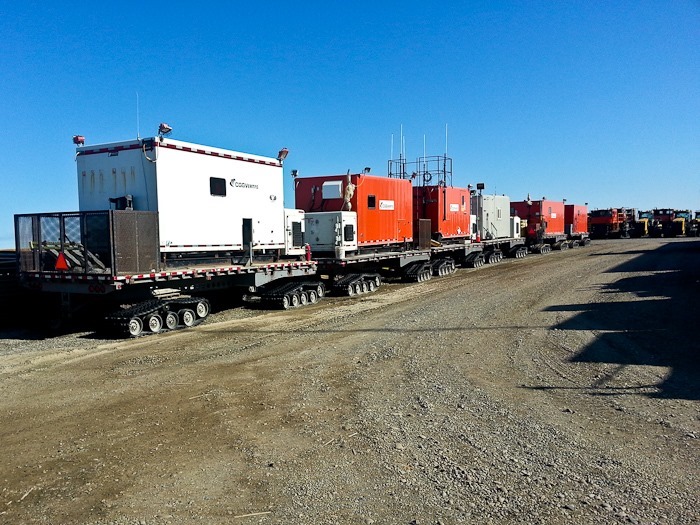
So many pipes, about 2,000 miles worth in Deadhorse alone:

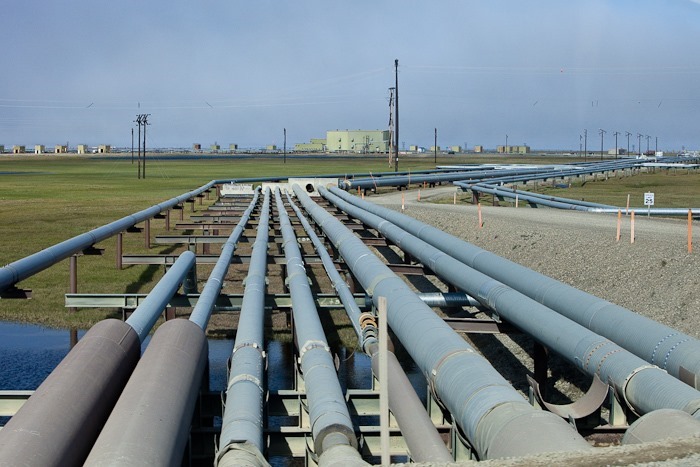
The investment in equipment and vehicles is staggering:
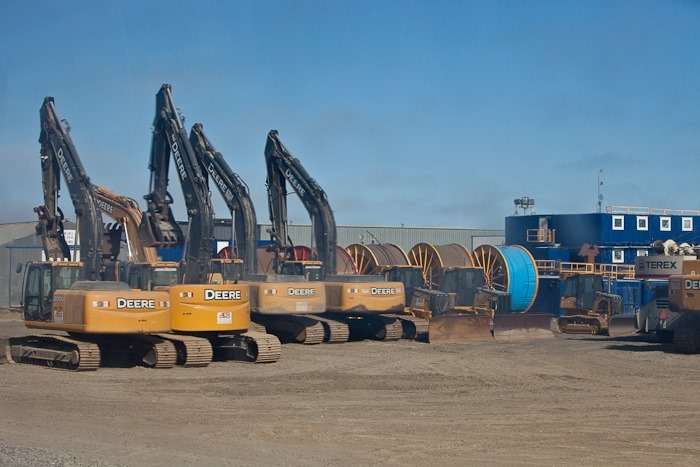

After our tour wrapped up, we started back South towards Coldfoot a little bit after 6pm. Glad we filled up here:
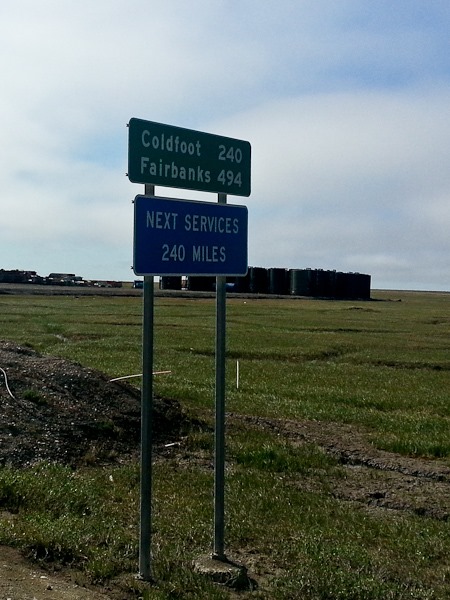
Across the tundra, a herd of caribou are the backdrop for a herd of musk oxen:
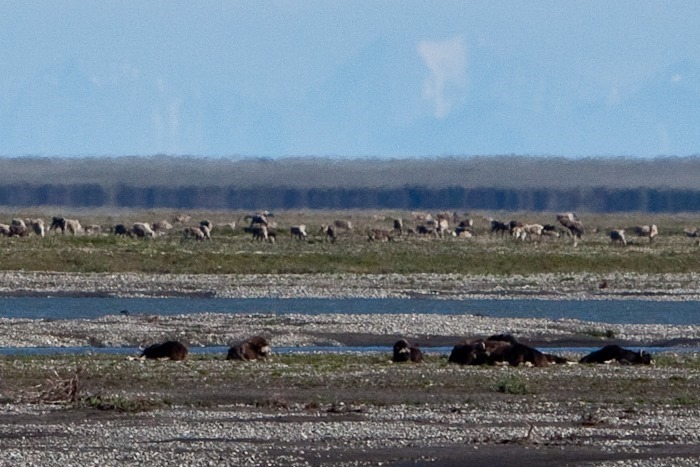
The pipeline keeps us company on our return drive:
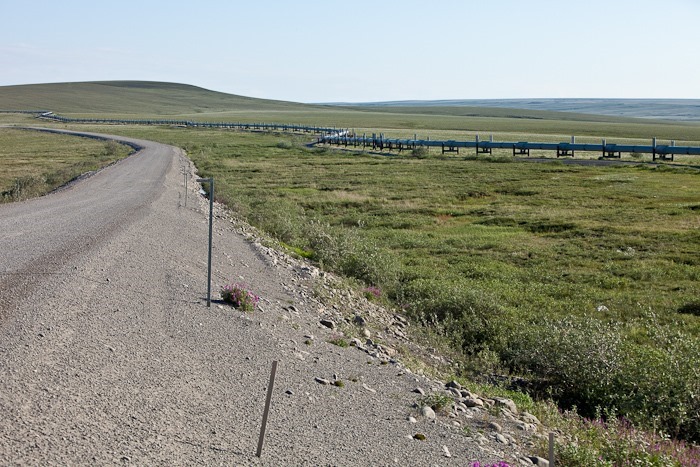
So much for our clean truck. This is the only restroom between Deadhorse and Coldfoot:
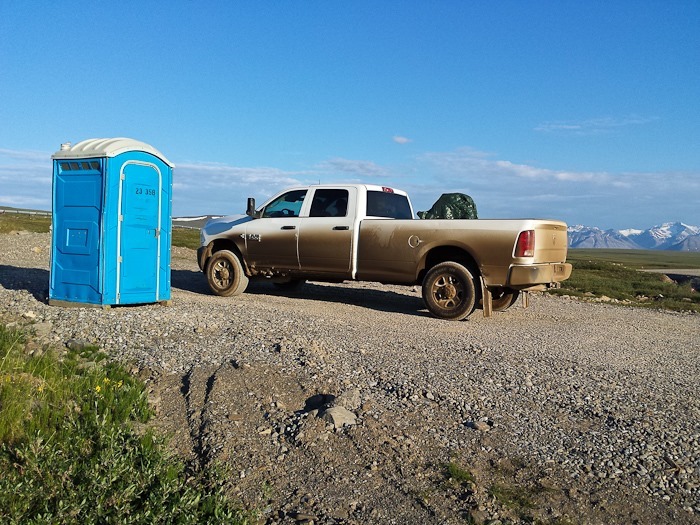
The tundra provides a lush foreground for the Brooks Range:
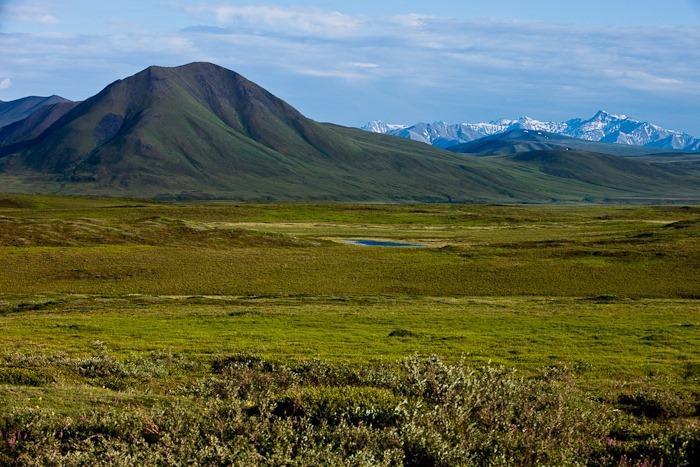
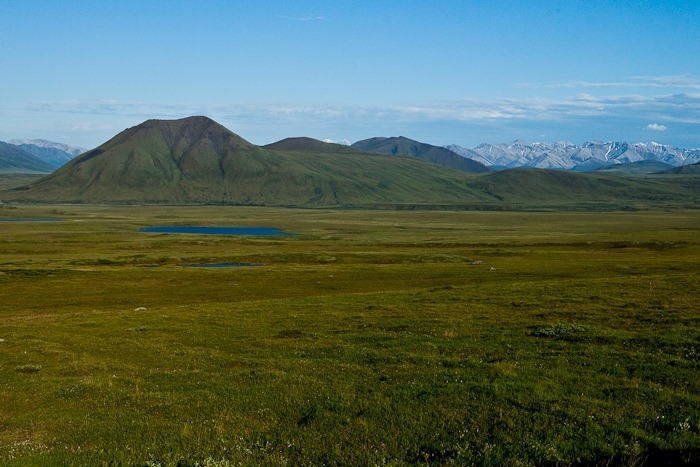
Ground water can’t soak down more than a foot or so due to the permafrost below, so the tundra is spongy and wet, despite the fact that the North Slope is technically a desert, receiving less than 5 inches of precipitation a year:
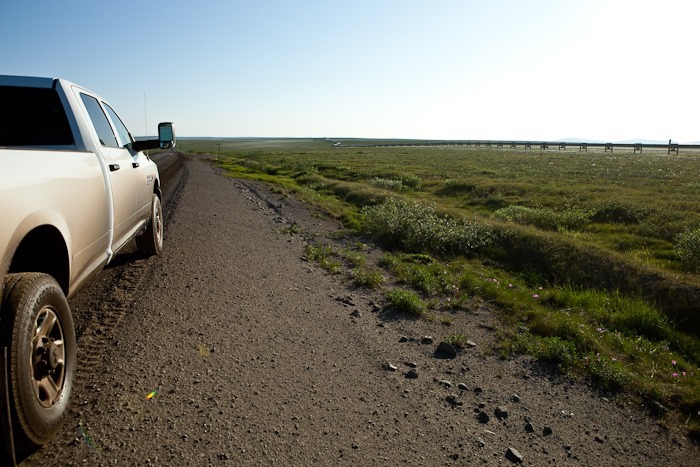
We approached the Brooks Range:
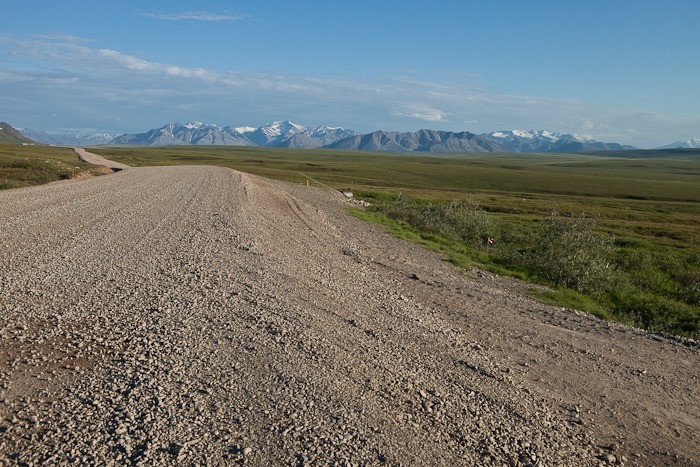
Fast-moving trucks like these threw rocks into our windshield, causing two chips in the glass that will need fixing:
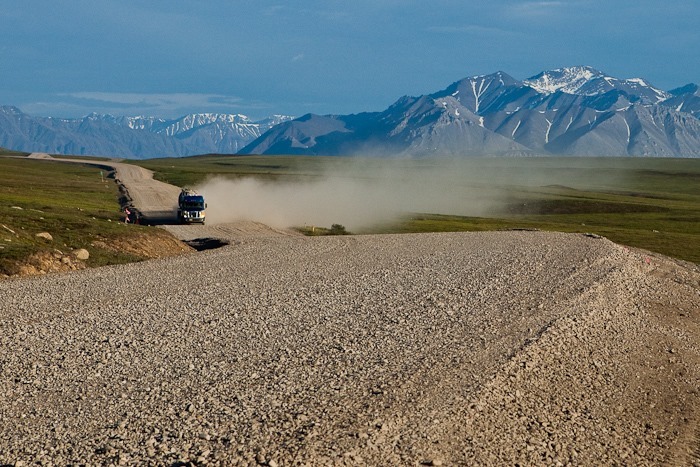

Leading up to the pass over the Brooks Range:
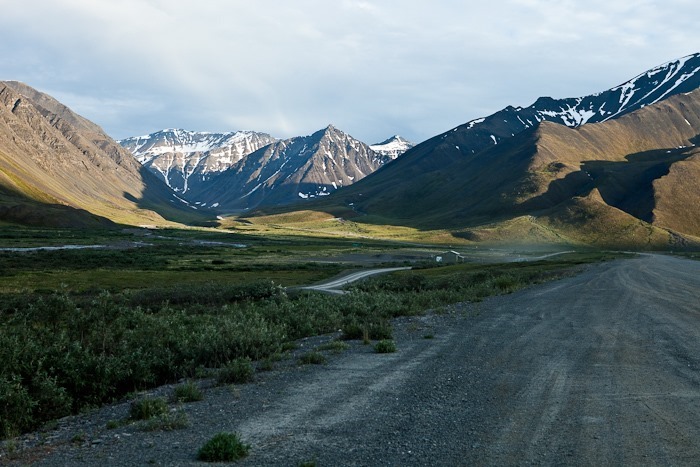
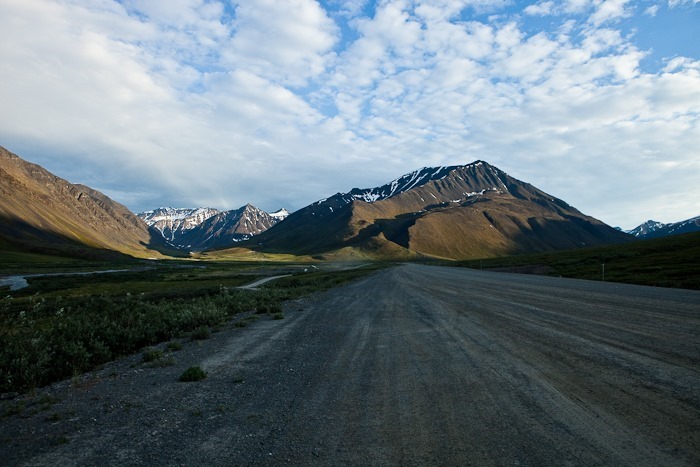
Looking back towards the pass after crossing it:
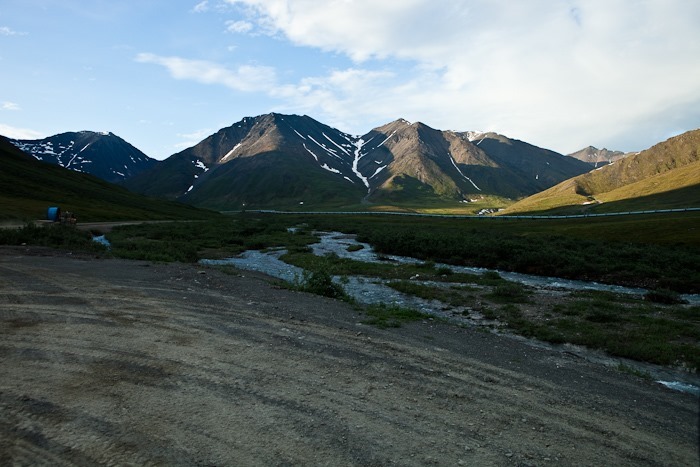
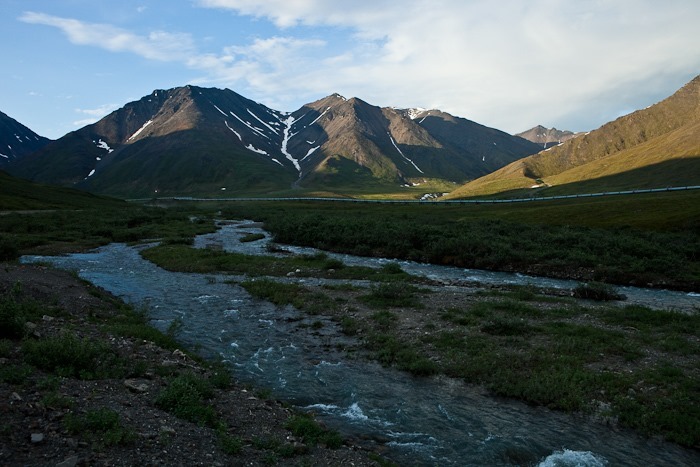
We arrived back at the RV shortly before midnight. We are above the arctic circle, so the sun is still up and probably won’t go down for another couple of weeks.
We did it! We visited the top of North America, at a latitude well North of Iceland and at about the midpoint of Greenland. See the trip map for driving details and our current location.



 Facebook
Facebook Email
Email
Wow! It is so lonely and desolate out there. Thanks for sharing the pics!
All the money and resources there just so we can get fuel for our vehicles here is amazing.
Yeah, after that visit, $4.00 a gallon doesn’t seem so unreasonable. 🙂
Fantastic post. Really enjoying your updates. Thanks for all your hard work!
Thanks, it is a lot of work!
Thank you for your very interesting website about your adventurous journey.
I feel in it the old American love for exploration.
And looking at the pictures I understand a lot about the world.
Thank you again.
Stefano (Italy)
Thanks Stefano!